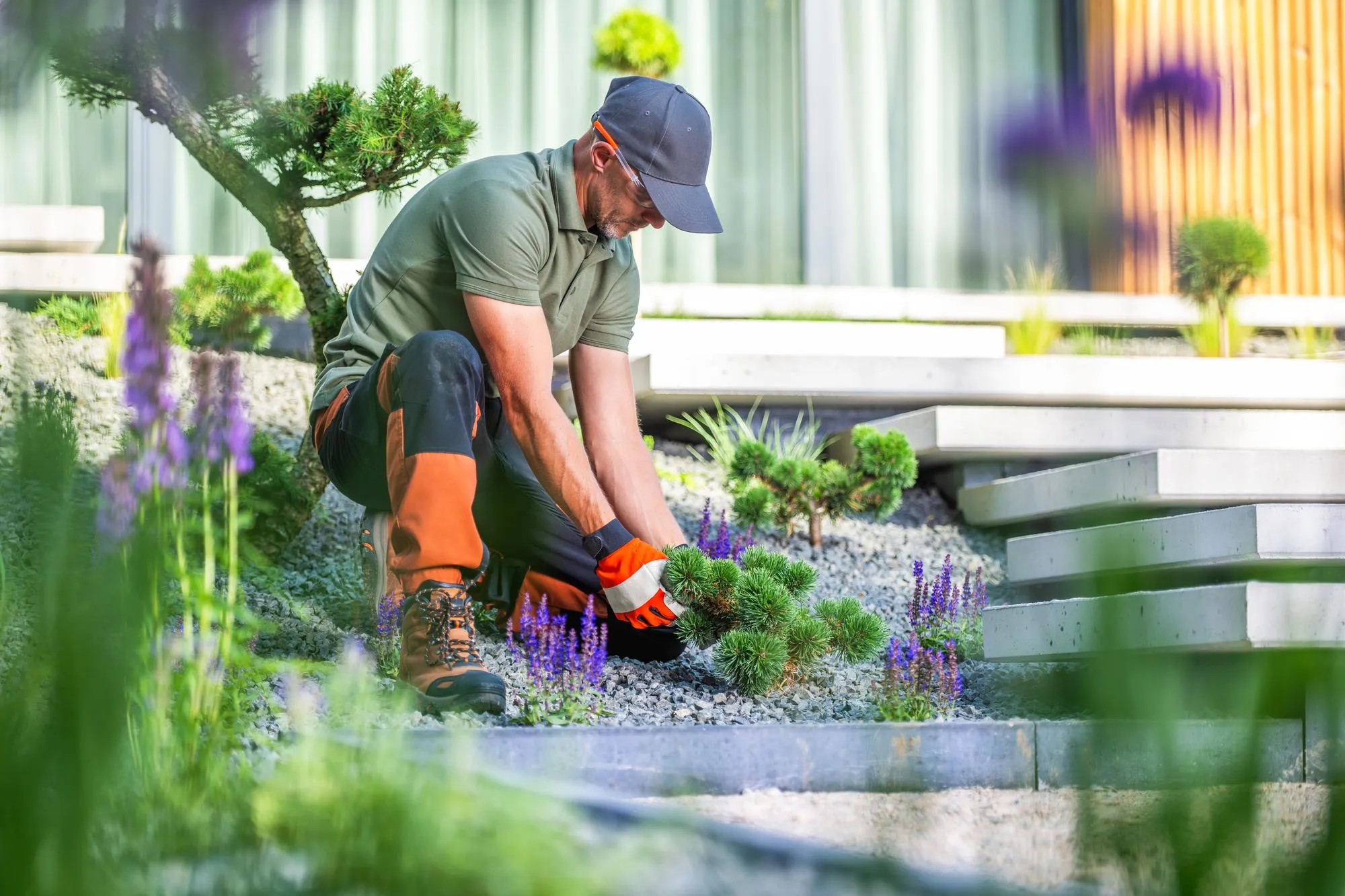Low-maintenance landscaping is a game-changer for busy homeowners who want a beautiful yard without dedicating hours to upkeep. With the right plants, materials, and design strategies, you can create a landscape that thrives year-round with minimal effort. Whether you’re short on time, have a hectic schedule, or simply prefer a garden that doesn’t require constant attention, these low-maintenance landscaping tips will help you achieve the yard of your dreams.
Sure! Here’s the paragraph:
For homeowners in Richmond Hill looking to enhance their outdoor spaces with minimal upkeep, low-maintenance landscaping solutions are key. Incorporating native plants, efficient irrigation systems, and durable materials can help reduce maintenance time and effort while maintaining a beautiful and functional garden. To learn more about how to transform your outdoor space, visit our page on Landscaping in Richmond Hill.
Why Choose Low-Maintenance Landscaping?
Maintaining a traditional garden can be time-consuming and labor-intensive. By adopting low-maintenance landscaping practices, you can reduce the need for frequent watering, mowing, fertilizing, and weeding. The benefits of low-maintenance landscaping include:
- Less Time Spent on Yard Care: Spend more time relaxing in your outdoor space instead of working in it.
- Water Conservation: Low-maintenance plants and efficient irrigation systems reduce the need for frequent watering.
- Cost Savings: Fewer maintenance tasks mean you’ll spend less on tools, fertilizers, and professional services.
- Sustainability: Creating a low-maintenance landscape can help reduce your carbon footprint, conserve water, and protect local wildlife.
1. Choose Low-Maintenance, Native Plants
One of the most important steps in creating a low-maintenance yard is selecting the right plants. Native plants are naturally adapted to your local climate, soil, and weather conditions, meaning they require less water, fertilizer, and pesticides compared to non-native species.
Some excellent low-maintenance, native plants for Ontario include:
- Daylilies (Hemerocallis spp.): Daylilies are drought-tolerant, require minimal care, and come in a variety of colors.
- Black-eyed Susan (Rudbeckia hirta): This perennial is hardy, easy to grow, and attracts pollinators.
- Coneflower (Echinacea purpurea): Known for their ability to thrive with little attention, coneflowers are ideal for sunny, dry spots.
- Lavender (Lavandula spp.): Lavender adds both fragrance and beauty to your landscape while requiring little water or pruning once established.
If you’re unsure about the best plants for your yard, landscaping consultation services can help you choose low-maintenance plants that are suited to your space and climate.
2. Incorporate Hardscaping for Less Lawn Care
One of the best ways to reduce maintenance in your yard is by incorporating hardscaping elements. Hardscaping involves the use of non-plant materials such as stone, gravel, brick, and wood to create functional and visually appealing outdoor spaces. These features not only reduce the need for mowing and watering but also provide structure and design to your garden.
- Patios and Pathways: Adding a patio or pathway made of stone or brick offers a low-maintenance alternative to grass and can create an inviting space for seating or entertaining.
- Gravel or Mulch Beds: Replacing some lawn areas with gravel or mulch beds can significantly cut down on watering and weeding. These materials are perfect for areas that don’t need frequent foot traffic but still need an aesthetically pleasing finish.
- Raised Garden Beds: For growing plants or vegetables, raised beds provide easy access and help reduce soil compaction, which means less weeding and watering.
When designing your hardscaping, be sure to incorporate outdoor lighting to enhance the beauty and functionality of your garden at night, creating a warm, welcoming environment.
3. Use Drought-Tolerant Plants and Groundcovers
Drought-tolerant plants are perfect for busy homeowners who may not have the time to water frequently. Once established, these plants require minimal water, making them ideal for reducing your landscape’s water usage and maintenance needs.
- Sedum (Sedum spp.): Also known as “stonecrop,” sedum is a succulent that thrives in dry soil and requires little care.
- Creeping Thyme (Thymus serpyllum): This aromatic groundcover spreads quickly and is perfect for filling in gaps between stepping stones or pavers.
- Blue Fescue (Festuca glauca): A decorative grass that thrives in poor soil and requires minimal water.
Groundcovers such as Creeping Jenny and Creeping Juniper can be used to fill in bare spots in your landscape, reducing the need for grass and preventing weed growth.
4. Install an Efficient Irrigation System
Watering can be one of the most time-consuming tasks in garden maintenance. An efficient irrigation system can help ensure that your plants receive the right amount of water without waste.
- Drip Irrigation: Drip irrigation delivers water directly to the roots of your plants, reducing water waste and minimizing evaporation. This is particularly useful for garden beds and container plants.
- Soaker Hoses: Soaker hoses are ideal for watering flower beds and lawns, providing deep watering that encourages root growth without over-watering.
- Rain Barrels: Collecting rainwater in a barrel can help reduce water costs and ensure your garden gets watered in an eco-friendly way.
By installing an irrigation system that is tailored to your garden’s needs, you can automate the watering process and save both time and resources.
5. Opt for Low-Maintenance Ground Covers
Instead of traditional grass lawns, which require regular mowing and watering, consider using low-maintenance ground covers that provide beauty and functionality without the high upkeep.
- Clover: Clover is a great alternative to grass, as it requires little water, stays green all season, and is resistant to pests.
- Sedum Groundcover: Sedum varieties can be used to cover large areas, reducing the need for mowing while adding texture and color.
- Sweet Woodruff (Galium odoratum): This low-growing perennial works well in shaded areas and provides a fragrant, evergreen ground cover with minimal care.
Ground covers also help suppress weeds, reducing the amount of time spent pulling unwanted plants from your garden.
6. Mulching for Weed Control and Moisture Retention
Mulch is an essential element in low-maintenance landscaping. It helps suppress weed growth, retain moisture in the soil, and keep plant roots cool in the summer.
- Organic Mulch: Organic mulches such as bark, wood chips, or straw break down over time, enriching the soil with nutrients. This type of mulch is ideal for flower beds and vegetable gardens.
- Inorganic Mulch: Gravel, stone, or rubber mulch are great options for walkways and garden beds that require minimal upkeep. These materials don’t decompose, so they last longer and require less frequent replacement.
Mulching & garden bed maintenance services can help you select the right type of mulch for your yard, keeping your garden beds tidy and functional.
7. Choose Hard-Working, Low-Maintenance Trees and Shrubs
Adding trees and shrubs to your landscape can provide shade, privacy, and structure, all with minimal effort. Choose varieties that are low-maintenance and suited to your climate and soil type.
- Evergreen Trees: Trees like white pine, cedar, or spruce provide year-round greenery without the need for regular pruning. They also reduce wind exposure and provide natural privacy barriers.
- Low-Maintenance Shrubs: Shrubs such as boxwood, spirea, and forsythia offer beauty and structure with minimal upkeep. They don’t require frequent trimming and are resistant to pests.
Working with landscaping professionals can help you select the right low-maintenance trees and shrubs that will thrive in your yard without constant care.
Conclusion
Low-maintenance landscaping allows you to create a beautiful, functional outdoor space without spending hours on upkeep. By selecting the right plants, using efficient irrigation systems, and incorporating hardscaping features, you can design a landscape that looks great year-round with minimal effort. With the help of expert landscaping services, you can ensure that your low-maintenance garden thrives, giving you more time to relax and enjoy your outdoor space.





